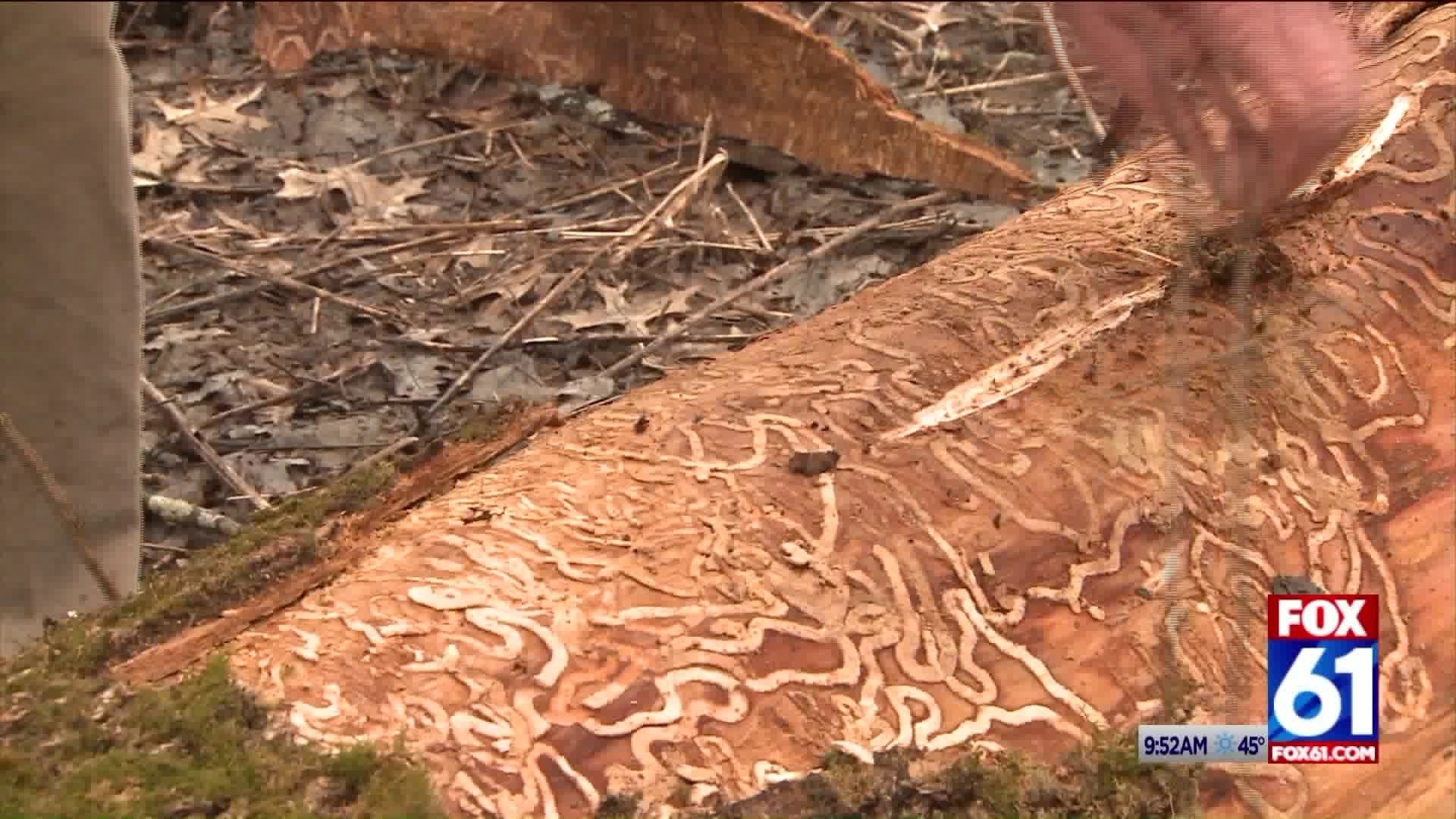With our global economy, products are moved around the world easier than ever before.
An unwanted consequence of such movement is that certain parasites are introduced to new environments, leading to major disruptions in nature.
One of those disruptions has happened recently with ash trees in Connecticut, and it’s all because of the Emerald Ash Borer.
The invasive species from Asia was first noticed in the Naugatuck Valley just nine years ago. Now, it's spread out across most of the state, with infested ash trees dying at a rapid rate.
We took a walk through the Mattatuck State Forest in Plymouth with Claire Rutledge from the Connecticut Agricultural Experiment Station. She and her colleagues are searching for the extent of the infestation, gathering data by scraping off bark to reveal a network of tunnels in the living tissue of the tree. That small layer of living tissue where the pest burrows is essential to the tree’s health, which is why so many trees are dying across the state.
Rutledge explained the process: “The borers begin to cut off the circulation all around the tree and when you get the entire tree girdled, that’s when the tree dies.”
Hungry woodpeckers will eat the larvae in the infected trees, but it’s not enough to significantly decrease the parasite's population.
Claire and her team are working on a more aggressive approach by releasing a different parasite that feeds off the seconds stage of the ash borer.
“The parasitoid actually pushes her eggs through the bark into the body of the larvae, and they eat the larvae from the inside out. It’s really gruesome, but it’s great!” Rutledge explained.
Once the pest has been established, it’s up to towns to figure out what to do with the trees that have died.
Windsor Forester James Govoni is dealing with a well-established infestation across his town.
“We first identified the Emerald Ash Borer about five years ago in Windsor," He told us, going on to say that you can either remove the infected trees or they’ll fall down themselves.
They’ve been removing trees along the Farmington River in Windsor, but it isn’t cheap work.
“We have to spend the money to take these down because we do it for the citizens who enjoy going outside. We’ll never be able to eradicate it. This is one insect that we know we won’t be able to control” Govoni said.
If you suspect the Emerald Ash Borer is in your area, call a local arborist. There may be some treatments for your trees that could save them. Unfortunately, for most of Connecticut, the Emerald Ash Borer is here to stay.

